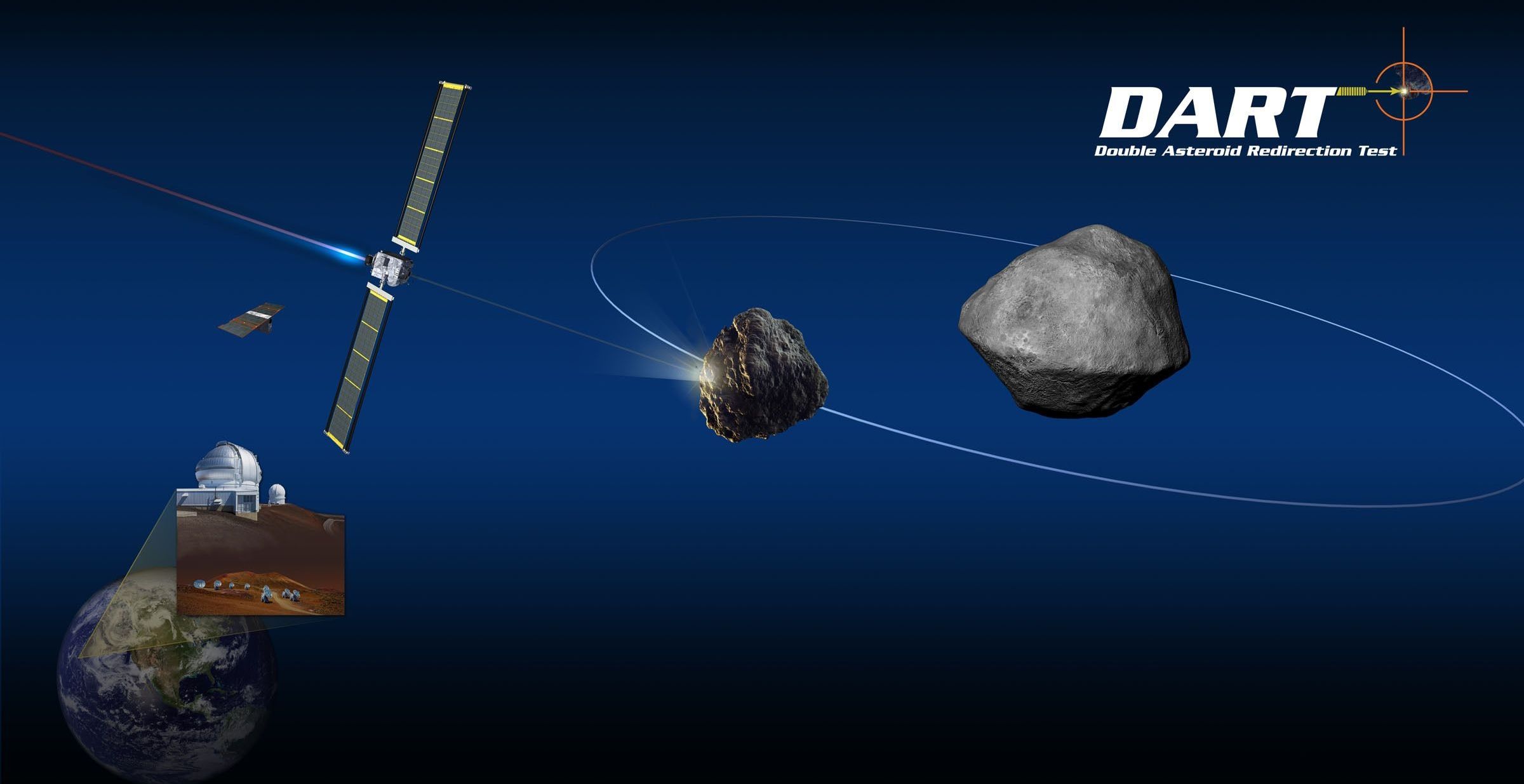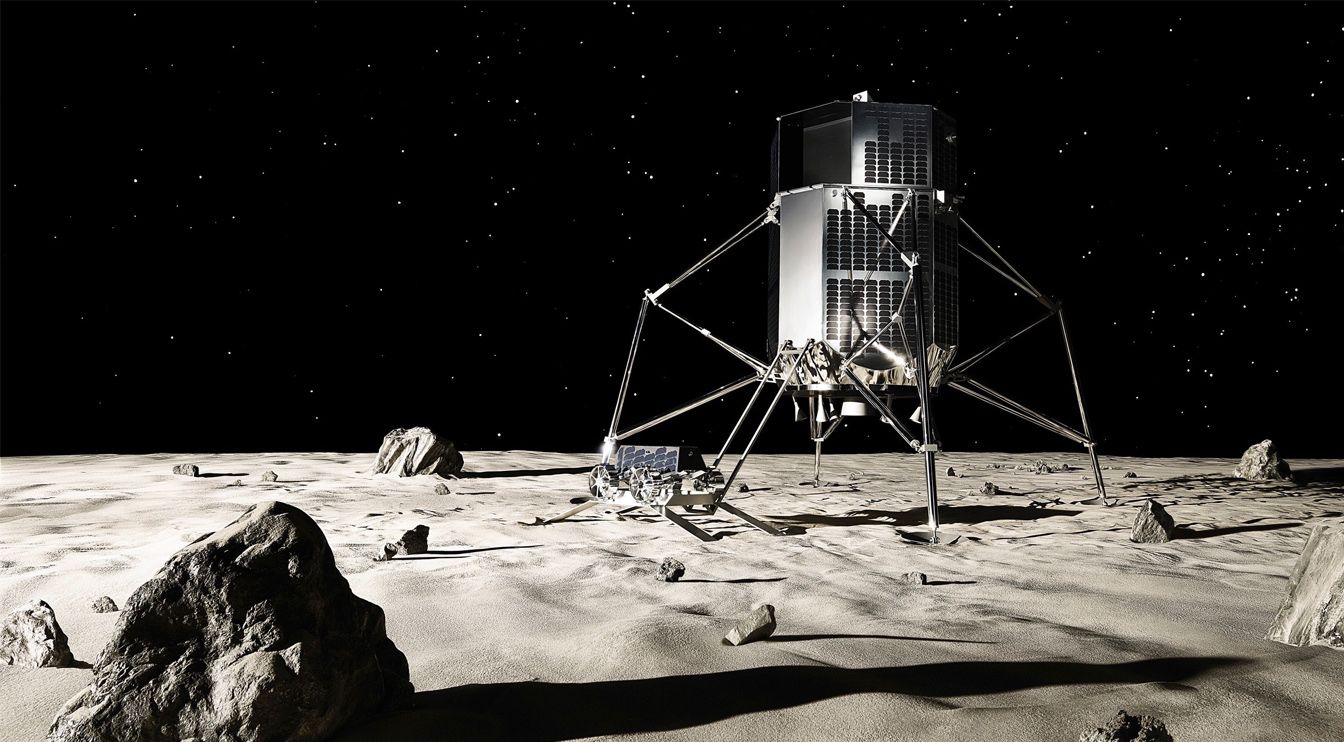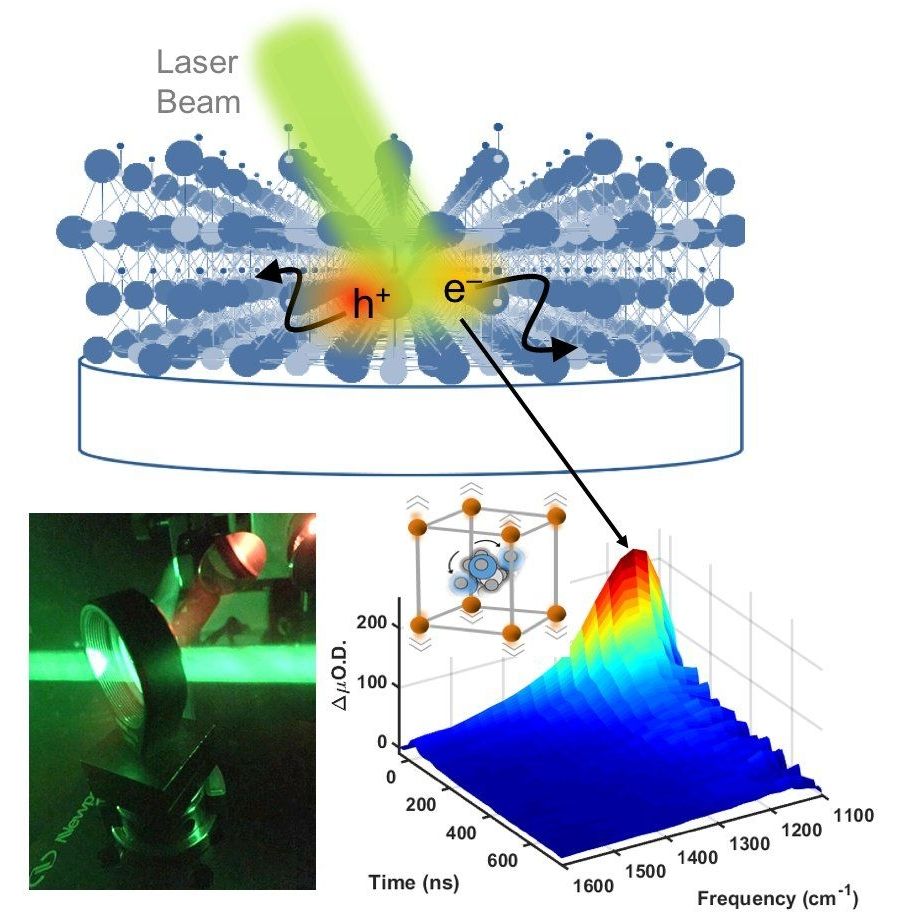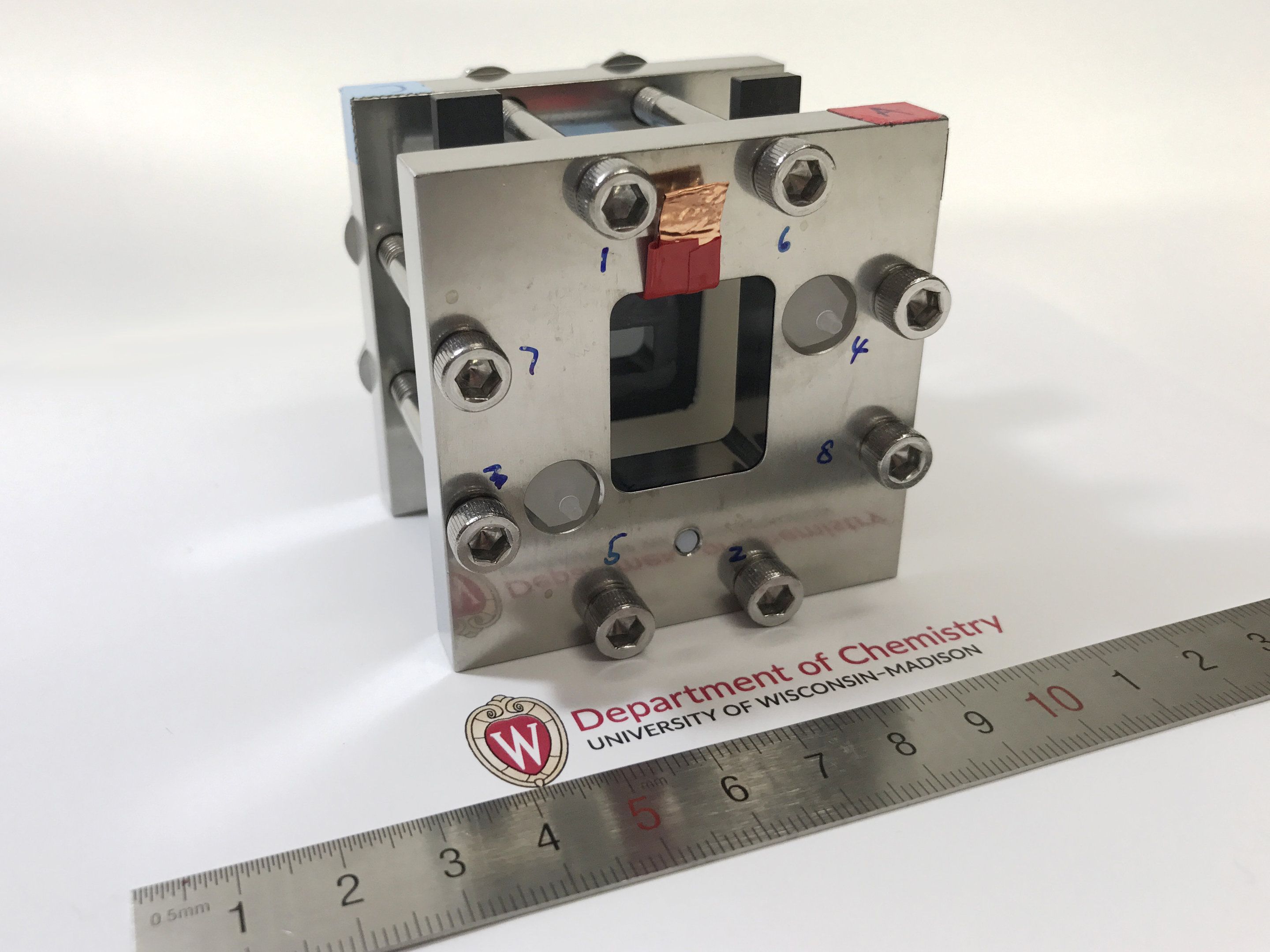Page 9419
Sep 27, 2018
Asteroids have been hitting the Earth for billions of years. In 2022, we hit back
Posted by Alberto Lao in categories: futurism, space
Payback time.
DART is a test of the kinetic impactor technique, a potential method to deflect an asteroid on course to impact the Earth. Kinetic impactors are one of only a small number of approaches we think are mature enough to deploy in the near future if they are needed (though we hope they won’t be). The most powerful asteroid-deflection technique is the use of a nuclear device. While such a device makes for good (and bad) sci-fi movies, there is widespread desire to develop alternate techniques.
The kinetic impactor concept is rather straightforward: ram the threatening object with a spacecraft and change its orbit so that it misses our planet. In theory, we could heave ever-larger masses at ever-faster speeds to deflect ever-larger objects. However, we think there is a practical limit — we don’t want to break up an incoming object into several pieces, lest we replace one big impact with multiple, only-slightly-smaller impacts. Exactly where that tradeoff lies is still uncertain, but we believe we can keep an object intact if we change its speed by less than the object’s own escape speed. In other words, since we think a lot of these objects are loose aggregates of gravel held together by gravity, we don’t want to shove so hard that we accidentally overcome that weak gravity and disperse the gravel.
Sep 27, 2018
SpaceX to Launch Japanese Startup’s Lunar Missions
Posted by Genevieve Klien in categories: robotics/AI, space travel
A Japanese startup called Ispace is shooting for the moon, and SpaceX is going to help. The company wants to lead the charge in the search for large water ice deposits on the lunar surface, and it has two missions planned to make it happen. Both missions, currently slated for 2020 and 2021, will fly on SpaceX rockets.
Ispace was among the companies competing for the Google-backed Lunar Xprize — it funded the Japanese “Hakuto” team. That challenge to land a rover on the moon dragged on for years as the list of competitors dwindled until the last team failed to secure a place aboard an Indian rocket. Ispace didn’t make it that far, but it was in the final five. Google declined to extend the cash prizes (totaling $25 million) in March of this year after pushing back the deadline several times as teams struggled to get their robots launched.
Ispace isn’t letting that failure bog it down. The first of its two planned lunar missions will consist of an orbital module. The second will be more ambitious with a pair of rovers going all the way to the surface. These are mainly technology demonstration missions rather than true ice scavengers, though.
Continue reading “SpaceX to Launch Japanese Startup’s Lunar Missions” »
Sep 27, 2018
Thought experiment paradox divides quantum experts
Posted by Genevieve Klien in category: quantum physics
If its assumptions are correct, the controversial thought experiment could force us to revise what we thought we knew about quantum mechanics.
Sep 27, 2018
Longevity Impact Forum announced the partnership with European Federation of Academies of Sciences Board Executive G
Posted by Edward Futurem in category: life extension
Duca.
This announcement was made in the presence of the Ambassador Extraordinary and Plenipotentiary of the People’s Republic of China.
At the 69th anniversary of the founding of the People’s Republic of China reception.
Sep 27, 2018
Growing Brains in Lab
Posted by Marcos Than Esponda in categories: biotech/medical, neuroscience
Scientists create 3-dimensional brain spheroids—small, spherical, laboratory-grown human brain tissue.
- By Sam Rose on September 25, 2018
Sep 27, 2018
What Is Big Data?
Posted by Ankur Bargotra in categories: information science, robotics/AI

In this video, we’ll be discussing big data – more specifically, what big data is, the exponential rate of growth of data, how we can utilize the vast quantities of data being generated as well as the implications of linked data on big data.
[0:30–7:50] — Starting off we’ll look at, how data has been used as a tool from the origins of human evolution, starting at the hunter-gatherer age and leading up to the present information age. Afterwards, we’ll look into many statistics demonstrating the exponential rate of growth and future growth of data.
[7:50–18:55] — Following that we’ll discuss, what exactly big data is and delving deeper into the types of data, structured and unstructured and how they will be analyzed both by humans and machine learning (AI).
Sep 27, 2018
Shake, rattle, and roll to high efficiency photovoltaics
Posted by Bill Kemp in categories: solar power, sustainability
New insight into how a certain class of photovoltaic materials allows efficient conversion of sunlight into electricity could set up these materials to replace traditional silicon solar cells. A study by researchers at Penn State reveals the unique properties of these inexpensive and quick-to-produce halide perovskites, information that will guide the development of next generation solar cells. The study appears September 27 in the journal Chem.
“Since the development of silicon solar cells, which today can be found on rooftops and roadsides, researchers have sought new types of photovoltaic materials that are easier to process into solar cells,” said John Asbury, associate professor of chemistry at Penn State and senior author of the study. “This is because construction of silicon solar cells is complex and hard to scale-up to the level that would be needed for them to generate even 10 percent of our total demand for electricity.”
Because of these complications, researchers have been searching for less expensive alternatives to silicon solar cells that can be processed more quickly. They are particularly interested in materials that can be processed using a technique called roll-to-roll manufacturing, a technique similar to those used to print newspapers that enables low-cost, high-volume production. Such materials must be processed from solution, like ink printed on a page.
Continue reading “Shake, rattle, and roll to high efficiency photovoltaics” »
Sep 27, 2018
Device that integrates solar cell and battery could store electricity outside the grid
Posted by Bill Kemp in categories: solar power, sustainability
Scientists in the United States and Saudi Arabia have harnessed the abilities of both a solar cell and a battery in one device—a “solar flow battery” that soaks up sunlight and efficiently stores it as chemical energy for later on-demand use. Their research, published September 27 in the journal Chem, could make electricity more accessible in remote regions of the world.
While sunlight has increasingly gained appeal as a clean and abundant energy source, it has one obvious limitation—there is only so much sunlight per day, and some days are a lot sunnier than others. In order to keep solar energy practical, this means that after sunlight is converted to electrical energy, it must be stored. Normally this takes two devices—a solar cell and a battery—but the solar flow battery is designed to perform like both.
“Compared with separated solar energy conversion and electrochemical energy storage devices, combining the functions of separated devices into a single, integrated device could be a more efficient, scalable, compact, and cost-effective approach to utilizing solar energy,” says Song Jin, a professor of chemistry at the University of Wisconsin-Madison. Jin and his team developed the device in collaboration with Jr-Hau He, a professor of electrical engineering at King Abdullah University of Science and Technology (KAUST) in Saudi Arabia.

















